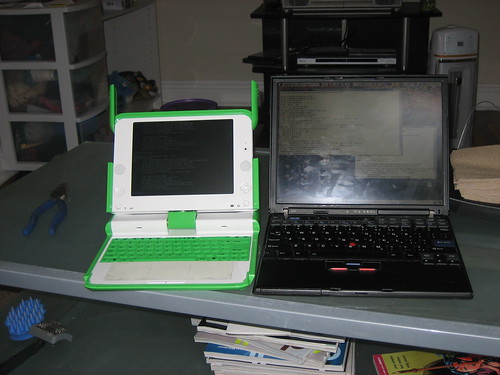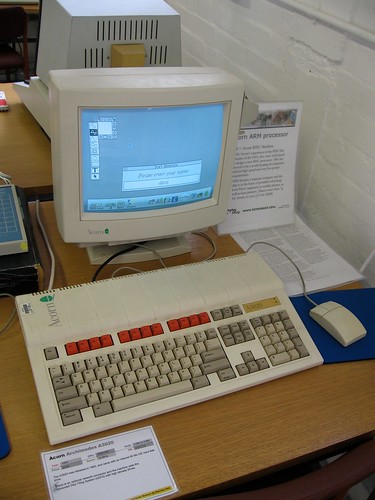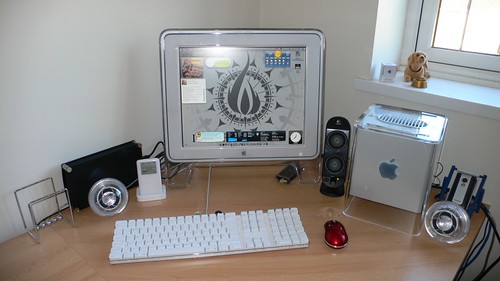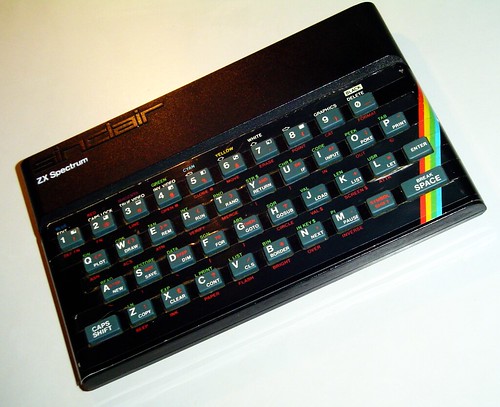
Welcome to my museum
Publication date: 14 June 2012Originally published 2012, in Atomic: Maximum Power Computing
Last modified 16-Jun-2012.
When I read Atomic's collectors' guide to classic consoles (in issues #128 to #130, in case you missed it), it didn't do much for me. That's only because I've never been a console gamer, though.
What it did do, though, is guide my thinking in a dangerous direction. Toward computer collecting.
I don't mean the old and busted clones that tend to accumulate in every PC gaming enthusiast's house. (At least my spare LCDs take up less space than my spare CRTs used to.) I mean hardware with real significance in the history of personal computing.
Different people want different things from a collection. Personally, I'm interested in home computers that still actually work, and can be used for something. Even if it's just playing a game in the authentic wonky-colour Apple II Hi-Res mode, or writing with no chance of being distracted by the Internet, because the computer you're using is ten years older than the Web.
I also want relatively "ordinary" computers, not the Lamborghini Miuras and Mercedes 6.9s of the computing world. I'm sure there's someone out there with an AT&T 3B2, a PDP-8, a Xerox Alto and an Apple Lisa in their rumpus room, but I, personally, am not crazy enough to be interested in anything that sells for more today than when it was new.
(And then there's the real stratosphere of the computing world, things like old supercomputers, that're about as affordable as a Bugatti Royale. You'd probably, actually, find it much easier to get a 1928 Bugatti running than, say, a Cray-1, because the Cray's power consumption is, I kid you not, more than one hundred thousand watts. Anybody who ever manages to hook a Bugatti 300-horsepower 12.7-litre straight-eight up to a Cray 250-horsepower MGU-1 Motor-Generator Unit should be crowned Emperor of Everything.)
Some of the contents of my hypothetical vintage computer museum are obvious. Some flavour of Apple II, of course; I'm partial to the IIc:

(source)
A Commodore 64, an Atari ST, a couple of those Amigas I never shut up about. (An Amiga 1200 booting from a CompactFlash card may be the world's most practical vintage computer.)
The less obvious stuff is more interesting.

(Old ThinkPad on the right, modern netbook on the left.
Source.)
The original 1995 IBM ThinkPad 701, for instance, with its "butterfly" folding keyboard that was wider than the laptop. Still an amazing bit of design today.

(source)
The 1983 TRS-80 Model 100 portable computer. Some writers still use one of these, because it's got a proper keyboard and a usefully large mono LCD screen, and it runs for a long time from four AA batteries. You have to transfer stuff to and from modern computers via serial, but they show up on eBay all the time, usually for less than $US100 for one in decent condition.
There's a whole category of letterbox-screened baby-computers like this, including a surprising number of modern versions. Some are dedicated word processors like most of AlphaSmart's products, others like the 1992 Amstrad NC100 have only a few canned applications, and then there are full general-purpose computers, like the One2OneMate "StudentMate", which is actually a solid-state Linux box with an almost-netbook screen sticking out of it. There's also the less sexy "QuickPAD Pro", a DOS-compatible AA-powered machine.
While we're on the subject of baby-computers, I've already got a couple of laptops made for kids: One Apple eMate...
...which is essentially a Newton with a keyboard, and one much more recent, similarly less than entirely successful, tiny and cheerful OLPC XO-1:

(source)
I use the OLPC all the time, but only to read books. (Because it's still a current product, there are quite a few XO-1s on eBay, though usually not cheaply.)
I'd need a couple of MicroBee 256TCs, too - one to relive the high point of Australian educational-computer development, and one to swap with someone in the UK for one or another Acorn Archimedes...

(source)
...the successor to the BBC Micro, and the corresponding high point for the British. An Archimedes is the one true platform on which to die constantly while attempting to play Zarch...
...also known as Virus, on less collectible computers.
There'd have to be a whole shelf of PDAs, that entire ecosystem of computing hardware that grew and blossomed and was suddenly annihilated by the apocalyptic impact of an asteroid called "the smartphone". I've written about these before, but there are now even more hilariously cheap pocketable computers all over eBay (here for eBay Australia, here for eBay US, here for eBay UK). The newer ones are now likely to have a standard memory-card socket, or IrDA that actually works, for moving data to and fro. A Psion Series 5...

(source)
...isn't quite as much fun to play with as a butterfly ThinkPad, but it's close, and despite their rarity Psion 5s have been going on eBay for less than $US100.
Oh, and there'd obviously need to be a few weird Apple products in addition to the eMate.

(source)
The original hard-drive-less 128-kilobyte Macintosh, which was great to play with but almost entirely useless. (There are always a few of those on eBay, often hopefully listed for $1000 or more, but once or twice a week one goes for only a few hundred.)

(source)
The Apple IIGS, which sold (or, more accurately, failed to sell) alongside early Macintoshes, but had broadly better specifications. (Quite a few of those on eBay, too.)

(source)
The small but imperfectly formed G4 Cube.

(source)
The tiny Sinclair ZX81 doesn't make the cut in the "useful for something" department, since it's only barely more practical than an Altair 8800. But it led to...

(source)
...the ZX Spectrum, which was a phenomenal success in the UK and has an immense library of games that're object lessons in wringing performance out of very modest hardware.
One day, there'll be an iPad 5 and 22nm Core i7 and 6000-series Opteron boxes in my museum, next to the IIe and Amiga 500.
And I bet I'll still be wondering why nobody makes a butterfly keyboard any more.


